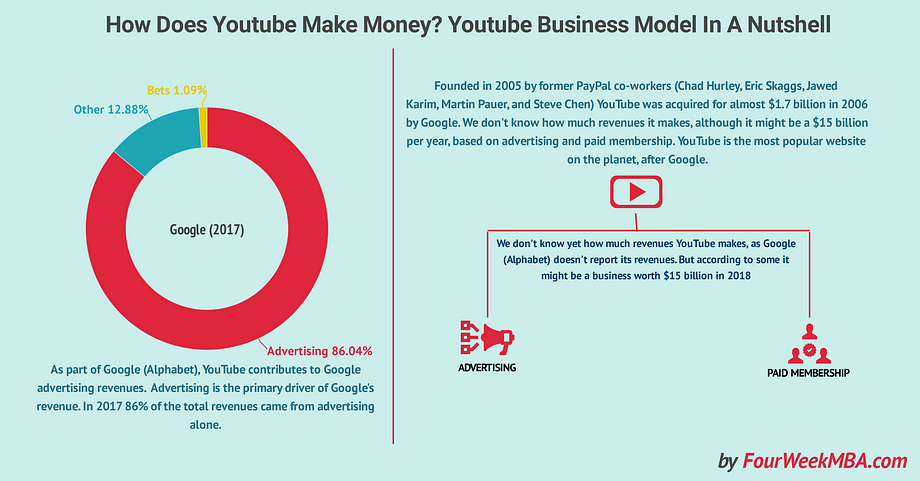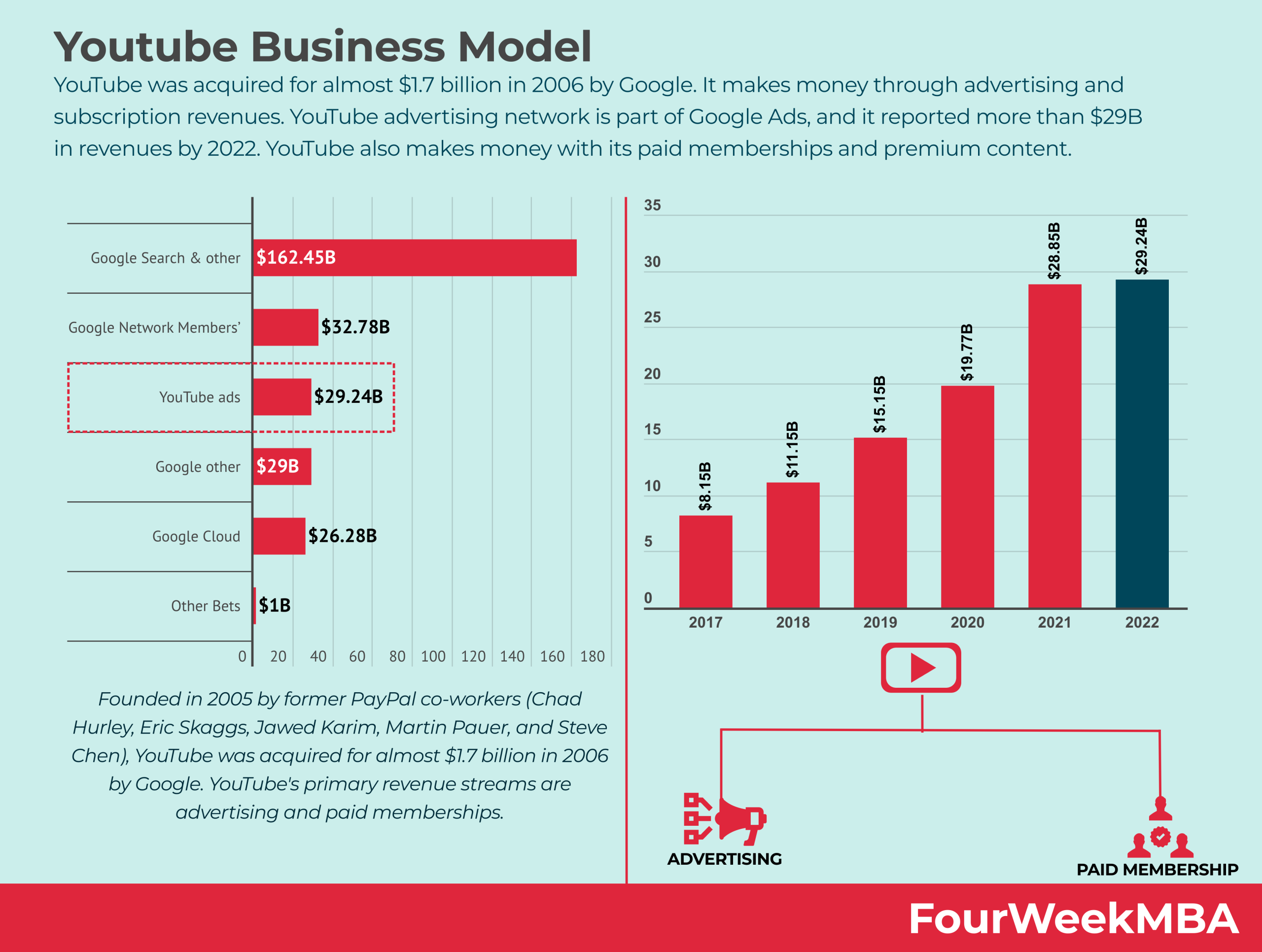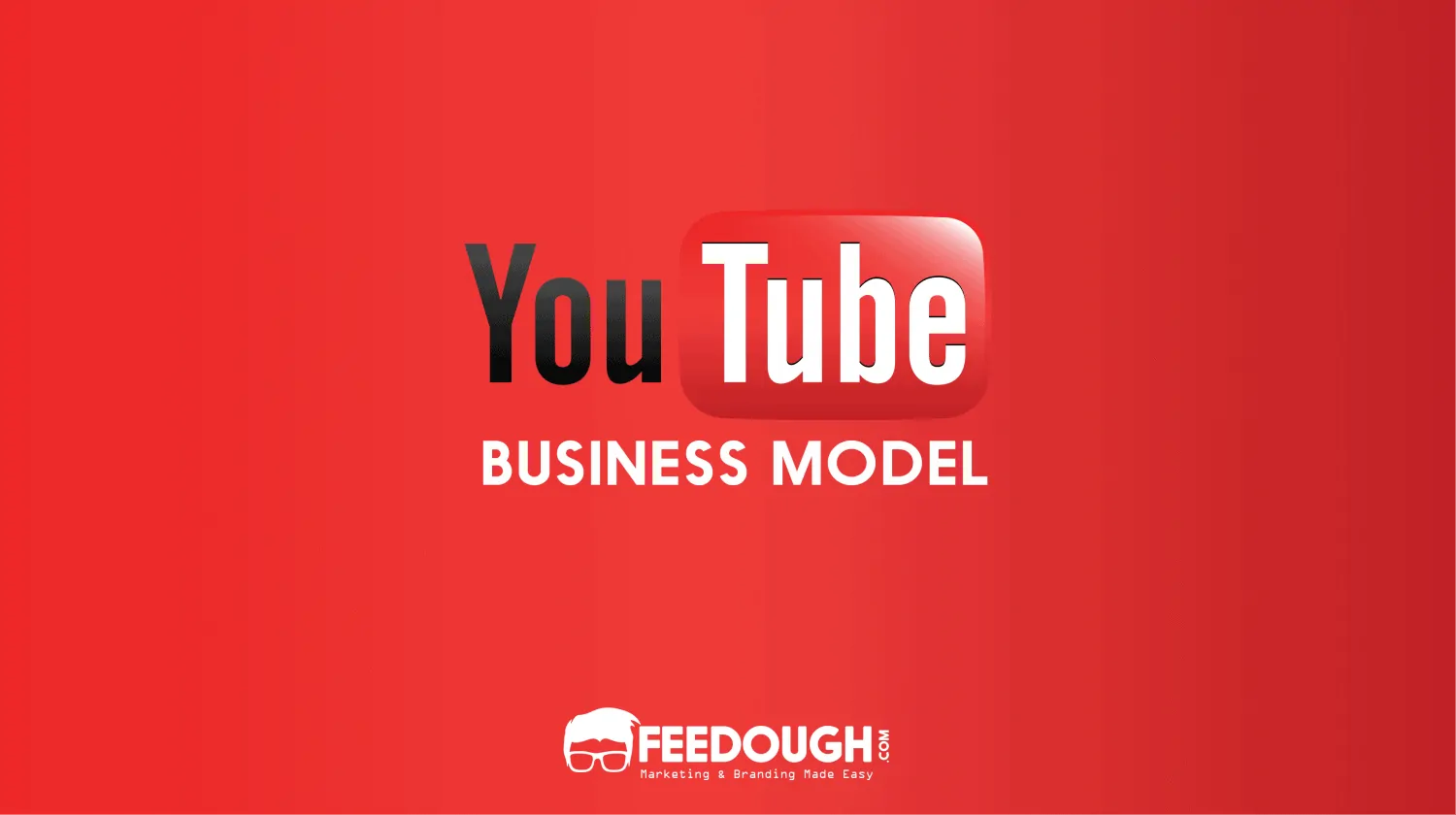YouTube has become a household name, often seen as the go-to platform for video sharing and entertainment. But have you ever wondered how this massive platform fits into Google's business strategy? In this post, we’ll explore the profitability of YouTube for Google and delve into its fascinating history, including its acquisition that shaped the platform into what it is today. Buckle up as we take a journey through time and numbers, unlocking the secrets behind
The History of YouTube and Its Acquisition by Google

YouTube's story began in February 2005, when three former PayPal employees—Chad Hurley, Steve Chen, and Jawed Karim—launched the platform as a user-friendly site for sharing videos. The first video, titled "Me at the zoo," was uploaded on April 23, 2005, marking the beginning of a revolution in how people consume content. Over the next few years, YouTube exploded in popularity, with users flocking to the platform to upload, share, and engage with a vast range of videos.
By 2006, YouTube had reached extraordinary milestones:
- Over 65,000 new uploads daily
- Over 100 million video views per day
- Millions of registered users
Its rapid growth caught the attention of many companies, and in October 2006, Google announced its acquisition of YouTube for $1.65 billion in stock. This move was anticipated and strategic, as Google recognized that video content was becoming a critical part of online consumption. The acquisition allowed Google to leverage YouTube's massive user base and content to enhance its advertising revenue and online presence.
Since then, Google has continually improved YouTube by introducing new features, monetization options for creators, and partnerships for exclusive content. Today, YouTube not only serves as one of the largest video-sharing sites in the world but also plays a crucial role in Google's overall profitability and brand strategy.
Also Read This: An Easy Guide to Making AI Art for Free
3. Revenue Streams of YouTube

When it comes to generating revenue, YouTube isn’t just relying on a single source. Instead, it has diversified its income streams to ensure a steady flow of profit. Let's explore the different ways YouTube fattened its piggy bank:
- Advertising Revenue: This is the bread and butter of YouTube's revenue model. Advertisers pay to have their ads shown before, during, or after videos, and YouTube shares a portion of this revenue with content creators. More views mean more ads — it’s a win-win for everyone involved.
- YouTube Premium: Launched as a subscription-based service, YouTube Premium offers users an ad-free experience, exclusive content, and background play capabilities. This subscription revenue is another key stream that contributes significantly to YouTube’s bottom line.
- Super Chat and Channel Memberships: For content creators, engaging with their audience is essential. YouTube allows fans to purchase “Super Chats” to highlight their messages during live streams and also offers channel memberships where fans can access exclusive features and content for a monthly fee.
- YouTube TV: Expanding its horizons, YouTube also ventured into streaming television. YouTube TV provides subscribers access to live TV channels, appealing to those looking for a cable alternative. This diversified content offering helps YouTube capture a larger audience.
In essence, YouTube feeds off multiple revenue streams ensuring that the platform remains profitable while also supporting content creators in their endeavors.
Also Read This: Stretching Images in Canva Without Cropping
4. Advertising Model and Its Impact on Profitability

The advertising model is at the heart of YouTube’s business strategy, playing a crucial role in its profitability. But how does it work, and what effects does it have? Let’s break it down.
At its core, YouTube's advertising model is based on a system of programmatic advertising. This means ads are automatically bought and sold based on algorithms rather than traditional methods. With millions of daily users and varied interests, YouTube can tailor specific ads to specific audiences. Here's how it enhances profitability:
- Targeted Advertising: Using sophisticated algorithms, YouTube can offer advertisers the opportunity to target specific demographics, interests, and even geographical regions. This precision ensures advertisers receive better ROI (return on investment) and are more likely to spend money on ads.
- Diverse Ad Formats: Advertisers have a number of adaptable ad formats to choose from, including skippable ads, non-skippable ads, bumper ads, and sponsored cards. This flexibility allows companies to choose options that best align with their marketing strategies, leading to higher overall ad spending.
- Revenue Sharing with Creators: The partnership approach, where YouTube shares ad revenue with content creators, encourages high-quality content production. This dynamic relationship keeps viewers engaged, which ultimately drives more traffic—meaning more ad views and higher profits.
In summary, YouTube's advertising model not only fuels its profitability but also fosters a creative ecosystem that benefits everyone, from advertisers to creators to the viewers themselves. With trends continually evolving, it's a landscape that gives room for both growth and innovation.
Also Read This: DIY Nail Shaping Guide at Home
5. Subscription Services and Their Role in Revenue
When discussing the profitability of YouTube, it’s impossible to overlook the impact of subscription services, which have become a significant pillar of its revenue model. While ad revenues are king for YouTube, subscriptions are steadily gaining ground, providing a more predictable income stream.
YouTube offers several subscription services, the most notable being:
- YouTube Premium: This ad-free experience allows users to watch videos without interruptions, download content for offline viewing, and access YouTube Music. With millions of subscribers, YouTube Premium has become a crucial component of YouTube's overall profitability.
- YouTube TV: A streaming television service that offers live TV from major broadcast and popular cable networks, YouTube TV also garners a dedicated subscriber base willing to pay for a more traditional TV experience in a modern, flexible format.
- YouTube Music: As a direct competitor to other music streaming services like Spotify and Apple Music, YouTube Music also contributes to the subscription revenue. It allows users to listen to music ad-free while also benefiting from YouTube's extensive video library.
Overall, the revenue generated from these subscriptions helps balance the ever-fluctuating advertisement income. It provides a more stable and sustainable financial foundation for YouTube and, by extension, Google. In a world where ad-blockers and viewer fatigue are rising, subscription services are a savvy play for YouTube’s long-term profitability.
Also Read This: How to Flip Images in Figma
6. Costs Associated with Running YouTube
While YouTube generates substantial revenue, it's also important to recognize the considerable costs involved in running and maintaining this colossal platform. Understanding these costs gives deeper insight into YouTube's financial landscape.
Here are the key areas where YouTube expends significant resources:
- Infrastructure: YouTube relies on a vast network of servers and data centers to host billions of videos. This requires heavy investment in technology and ongoing maintenance costs.
- Content Moderation: Ensuring that user-generated content adheres to community guidelines is essential. YouTube employs a mix of automated systems and human moderators, both of which come with hefty costs.
- Licensing Fees: For services like YouTube Music, the platform must pay licensing fees to artists, record labels, and content creators. These costs can add up significantly.
- Employee Salaries: From engineers to content strategists, YouTube employs thousands of staff who require competitive salaries and benefits. A well-trained team is critical for the platform's success.
- Marketing and Promotion: To attract and retain users, YouTube invests substantially in marketing efforts, helping to keep the platform at the forefront of viewers' minds.
Tallying these expenses provides a clearer picture of what it takes to run YouTube efficiently. Although the platform is incredibly profitable, these operational costs must be managed carefully to continue thriving in a competitive digital landscape.
Also Read This: Tracing Images in Procreate for Beginners
Comparing YouTube's Profitability with Other Google Services
When we think about Google's profitability, YouTube often gets left out of the conversation. However, it plays a significant role in Google's overall revenue model. To put things into perspective, let’s compare YouTube’s profitability with other Google services like Google Ads and Google Cloud.
1. Advertising Revenue: One of the primary revenue streams for YouTube is advertising, which is similar to Google’s main source of revenue through Google Ads. In fact, YouTube generates billions in ad revenue annually, making it a formidable player in this space. According to recent reports, YouTube's ad revenue has significantly increased, indicating that more businesses recognize the platform as a valuable advertising arena.
2. Subscription Services: In contrast to other Google services that mainly rely on ad revenue, YouTube has diversified its income through premium subscriptions like YouTube Premium. By offering ad-free experiences, exclusive content, and other perks, YouTube attracts users willing to pay monthly fees. This model is somewhat akin to Google Play Music and other subscription services.
3. Comparing Profit Margins: While Google Ads typically boasts higher profit margins due to lower operational costs, YouTube's investment in content creation and management can impact its margin. That said, YouTube remains a crucial asset in Google's portfolio, often overshadowing some of its other services in terms of reach and user engagement.
In summary, while YouTube may not boast as high profit margins as some of Google’s other services, its unique offering and growing market share suggest that it is not only profitable but also an integral part of Google’s business model.
Also Read This: How to Insert an Image in SolidWorks for Enhanced Visuals
Future Prospects and Growth Opportunities for YouTube
As we look ahead, YouTube is poised for a future filled with growth opportunities. With a rapidly evolving digital landscape, the platform has multiple avenues to enhance its profitability and user engagement.
1. Expanding Ad Formats: YouTube is already experimenting with innovative ad formats, including shoppable video ads and interactive ad experiences. These new formats not only engage the audience better but also offer advertisers more ways to reach potential customers, driving further revenue.
2. Growing International Markets: YouTube has a robust presence globally, but there are still many untapped markets. By localizing content and offering region-specific advertising solutions, YouTube can capitalize on international growth, potentially replicating its success in countries like the U.S. and India.
3. Leveraging AI and Machine Learning: Using advanced algorithms and machine learning can greatly enhance user experience. By personalizing content recommendations more effectively, YouTube can keep viewers on the platform longer, which translates to higher ad revenue.
4. Collaborations and Partnerships: Strategic partnerships with brands, influencers, and content creators can create unique content and marketing opportunities. This can drive more users to the platform, increasing both engagement and revenue.
In conclusion, YouTube is not merely resting on its laurels; it's continuously evolving and adapting to ensure profitability and relevance in an ever-changing digital environment. Whether through innovation in ad formats, tapping into international markets, or utilizing advanced technologies, the future looks bright for YouTube.
Is YouTube Profitable for Google and How Does Its Business Model Work
YouTube, a subsidiary of Google since 2006, has evolved into one of the most significant video-sharing platforms worldwide, boasting over 2 billion monthly logged-in users. The profitability of YouTube is intricately linked to its diverse business model, which primarily revolves around advertising revenue, premium subscriptions, and software integrations.
At the heart of YouTube's business model are the following revenue streams:
- Advertising Revenue: YouTube generates a substantial portion of its income through ads displayed on videos. These ads come in several forms, including:
- Overlay ads
- Skippable video ads
- Non-skippable video ads
- Bumper ads
- YouTube Premium: For a monthly subscription fee, users enjoy an ad-free experience, access to YouTube Originals, and the option to download videos for offline viewing.
- Channel Memberships and Super Chat: Content creators can monetize their channels through memberships, allowing fans to support them directly in exchange for exclusive perks, while Super Chat allows viewers to pay to highlight messages during live streams.
- Partnerships and Collaborations: YouTube collaborates with brands for sponsored content, where they partner with influencers to promote products or services.
The platform further enhances its profitability through continuous innovation and integration with Google's ecosystem, which provides valuable data on user behavior and preferences, allowing for targeted advertising. The synergy between Google’s search capabilities and YouTube's vast content library ensures high visibility and relevance of ads.
In conclusion, YouTube's multifaceted business model not only significantly contributes to Google’s revenue but also shapes the future of video content consumption and online advertising.
 admin
admin








